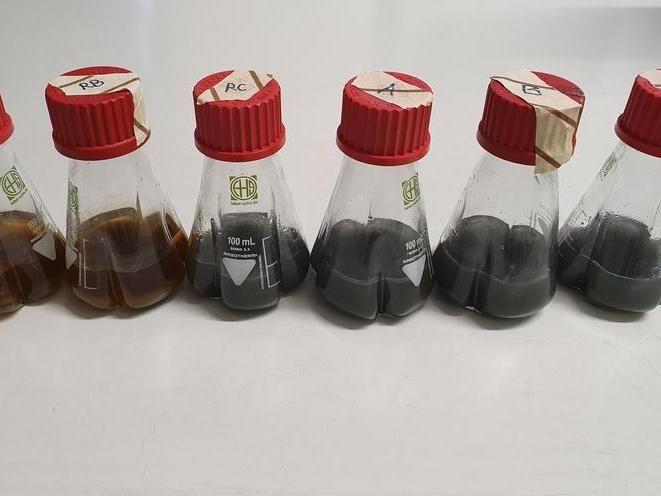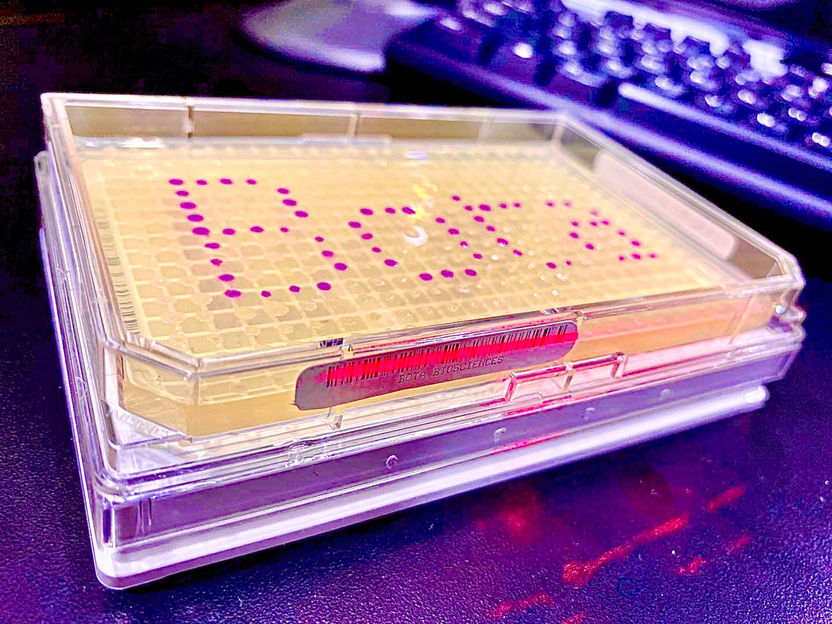Effective metal extraction with electron-stimulated microorganisms by bioleaching
Researchers are working on solution for the economical consumption of resources, their recycling and the future recovery of new raw material sources, as well as on an environmentally friendly but still demand-oriented extraction worldwide. The extraction of heavy metals from their ores with the help of microorganisms is called microbial ore leaching or bioleaching. At least since the mid-1800s, for example, copper has been leached from ores of the huge Rio Tinto deposit in southern Spain by microbiological processes. In this case, these naturally occurring processes take place in an uncontrolled manner.
Currently, bioleaching of copper in large-scale production is mostly performed by percolation in stockpiles. The mineral has to be crushed to a particle size of about 1 cm or smaller in two to three crushing stages. Diluted sulfuric acid solution is applied to the heaped material via dripping irrigation or sprinkling and the process has to be repeated until the desired copper concentration is achieved. The overall leaching process may last for several months.
To accelerate microbial ore leaching and to apply the process for a more efficient recovery of metals from tailings and waste, an interdisciplinary consortium has formed at Fraunhofer FEP, which has now received internal grant.
Over decades, the Fraunhofer FEP has built up expertise in the field of electron beam technology, the development of electron beam sources and application-specific adaptation. This know how is now transferred to biotechnological processes.
Dr. Simone Schopf, group manager of "Biotechnological Processes" at Fraunhofer FEP explains: "We are currently working on a lab-scale technology for the direct integration of an electron beam source into a bioreactor for the treatment of liquids. At the same time, we were able to run initial tests with an existing electron beam plant to proof the feasibility of the technology. Our results suggest that the interaction between electrons and bacteria can lead to stimulation. For example, in preliminary experiments we stimulated bacteria with low electron doses and achieved yields that were approximately 10% higher. The technology will be specifically developed for applications in the life science and environmental technology sectors."
Up to now, the treatment of liquids with electrons has been carried out with very thin liquids films with linear type accelerators. The production of such large linear type accelerators is not a problem. The challenges lie in the miniaturization of the electron beam source and the design of the interface to the bioreactor. However, direct and targeted introduction of the electrons into the liquid entails low energy losses and the cooling effect of the liquid can be used to beneficial effect.
Dr. Michiel Top adds: "Fraunhofer FEP is now closing a technological gap in electron treatment of liquids: with a low-cost, miniaturized electron beam source (low-energy electron emitter) integrated into a stirred bioreactor containing appropriate microorganisms."
Currently, the research focuses on bioleaching for the recovery of raw materials or as a recycling process. In addition to using the process for microbial ore leaching, the scientists also anticipate applications in wastewater treatment, sterilization applications, the food industry and the pharmaceutical industry. The process may also be of interest for the biotechnological production of natural substances or even "green" hydrogen in the future.
The aim of the Fraunhofer FEP is to collaborate with industrial partners to exploit novel future markets and to develop a technology that can be used to overcome the economic and social challenges of tomorrow. There is already great interest in the development.

Samples with electron beam treated bacteria for bioleaching
Fraunhofer FEP
Most read news
Topics
Organizations
Other news from the department science

Get the life science industry in your inbox
By submitting this form you agree that LUMITOS AG will send you the newsletter(s) selected above by email. Your data will not be passed on to third parties. Your data will be stored and processed in accordance with our data protection regulations. LUMITOS may contact you by email for the purpose of advertising or market and opinion surveys. You can revoke your consent at any time without giving reasons to LUMITOS AG, Ernst-Augustin-Str. 2, 12489 Berlin, Germany or by e-mail at revoke@lumitos.com with effect for the future. In addition, each email contains a link to unsubscribe from the corresponding newsletter.
Most read news
More news from our other portals
Last viewed contents
List_of_homeopaths
Kaposi's_sarcoma-associated_herpesvirus
Category:Pharmacology
Muscle_fiber

BASF invests in biotechnology start-up Bota Bio - Bota Bio’s next-generation industrial biology platform is a combination of computation and cutting-edge biotechnology
Malachite_green
World_Heart_Federation

Hobit Turns Immune Cells Into Killers - Can killer ILCs be made therapeutically useful?

Research finds possible answer to why some develop Alzheimer’s - and others don’t






















































